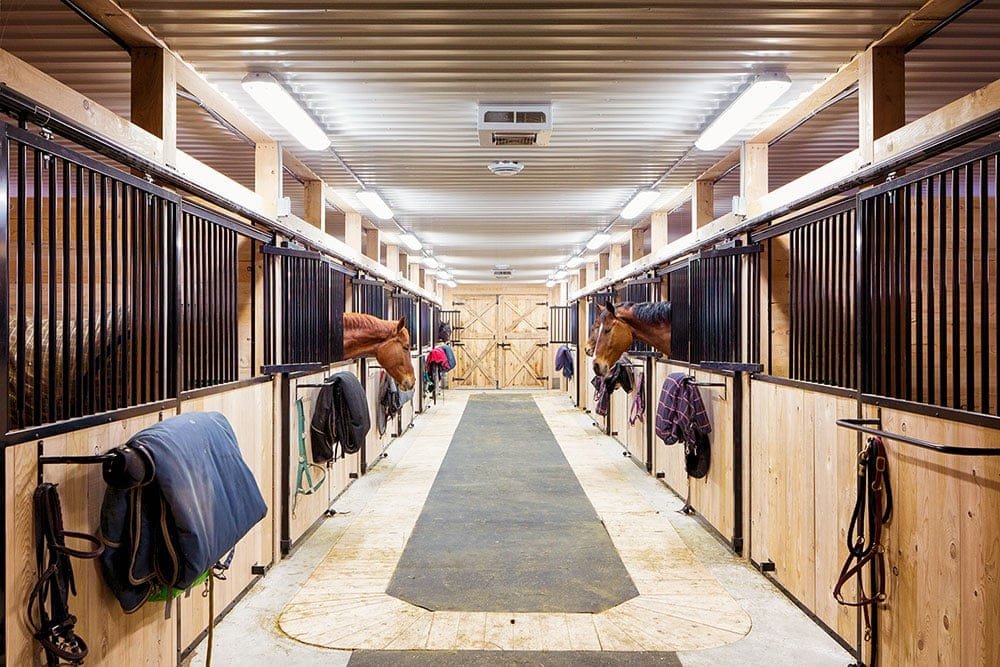Should I Close My Horse Barn Doors During Winter?
As winter sets in, horse owners often face the dilemma of whether to keep their barn doors open or closed. This decision can have a significant impact on your horses’ health, comfort, and safety. While each barn and situation is different, understanding the pros and cons of closing barn doors during the cold months will help you make an informed decision.
The Importance of Ventilation
Proper ventilation is one of the most critical factors in horse barn management, especially during winter. Barns that are tightly sealed can quickly become stuffy, trapping moisture, ammonia, and bacteria. Horses, like humans, need fresh air to breathe, and a lack of ventilation can lead to respiratory issues, mold growth, and a buildup of harmful gases.
Even in winter, it’s essential to maintain air circulation, so horses don’t breathe in stagnant air that can cause health problems. If you completely close the barn doors, you risk blocking natural airflow, which can lead to condensation on the walls and ceiling. This moisture can cause respiratory issues or contribute to the development of diseases such as heaves or mold allergies.
Keeping Horses Warm and Dry
On the other hand, winter can bring freezing temperatures, wind, and snow, all of which can make it challenging to keep your horses warm. If you leave the barn doors wide open, the cold wind and snow can blow directly into the barn, making it uncomfortable or even dangerous for the horses. Horses that are exposed to cold drafts or wet conditions are at higher risk for developing illnesses such as colic, pneumonia, or frostbite.
To balance these concerns, many horse owners opt to keep barn doors partially closed or install stall guards or curtains. This allows some ventilation without letting in excessive cold or moisture. In some barns, large doors can be divided into smaller sections that can be opened or closed based on the weather conditions. This gives you the flexibility to adjust airflow and temperature control.
Creating a Stable Microclimate
One effective strategy for managing your barn environment is to create a stable microclimate. This means ensuring that your barn stays dry, well-ventilated, and insulated while also protecting your horses from extreme temperatures. Closing barn doors can help maintain a more consistent temperature inside, but it’s crucial to do so while also allowing for airflow.
Consider using barn fans, ventilation systems, or even installing an air exchange system to provide consistent airflow without compromising warmth. Some barns are equipped with windows or vents that can be opened and closed to regulate the temperature and humidity inside. A well-insulated barn can help keep your horses warm without overusing space heaters or electric heat sources, which can pose a fire risk.
Consider Your Barn’s Location
The layout and location of your barn play a significant role in the decision to open or close the doors. If your barn faces into the wind, it may be more beneficial to keep the doors closed to prevent drafts. Conversely, if the barn is situated in a sheltered location, keeping the doors open might be a good way to ensure adequate airflow while minimizing exposure to harsh winds.
You should also consider the general climate in your area. In milder winter climates, it might be perfectly fine to keep the barn doors open for most of the day. In areas with extreme winter temperatures, heavy snow, or strong winds, keeping the doors closed during the coldest hours of the day might be the best option.
The Role of Horses’ Blankets

While horses can generally tolerate cold weather, they still need proper shelter and care. Blanketing your horses during the winter is a common practice to help them stay warm. However, even horses with blankets should have access to dry, draft-free areas where they can rest. If you close the barn doors too tightly, they may feel trapped or become overly warm. Always monitor the condition of your horses, and if you notice signs of overheating or discomfort, adjust the barn environment accordingly.
Final Thoughts
The question of whether to close your horse barn doors during winter is not a simple one, but with some thoughtful planning, you can find a solution that ensures your horses’ health and safety. The key is maintaining proper ventilation while protecting your horses from the cold. A balance between airflow and temperature control is essential for their well-being.
In general, it’s a good idea to keep your barn doors partially closed or use stall curtains, windows, or vents to allow airflow while minimizing cold drafts. Always consider the specific needs of your horses, your barn’s design, and your local climate conditions to create the ideal environment for them during the winter months.




